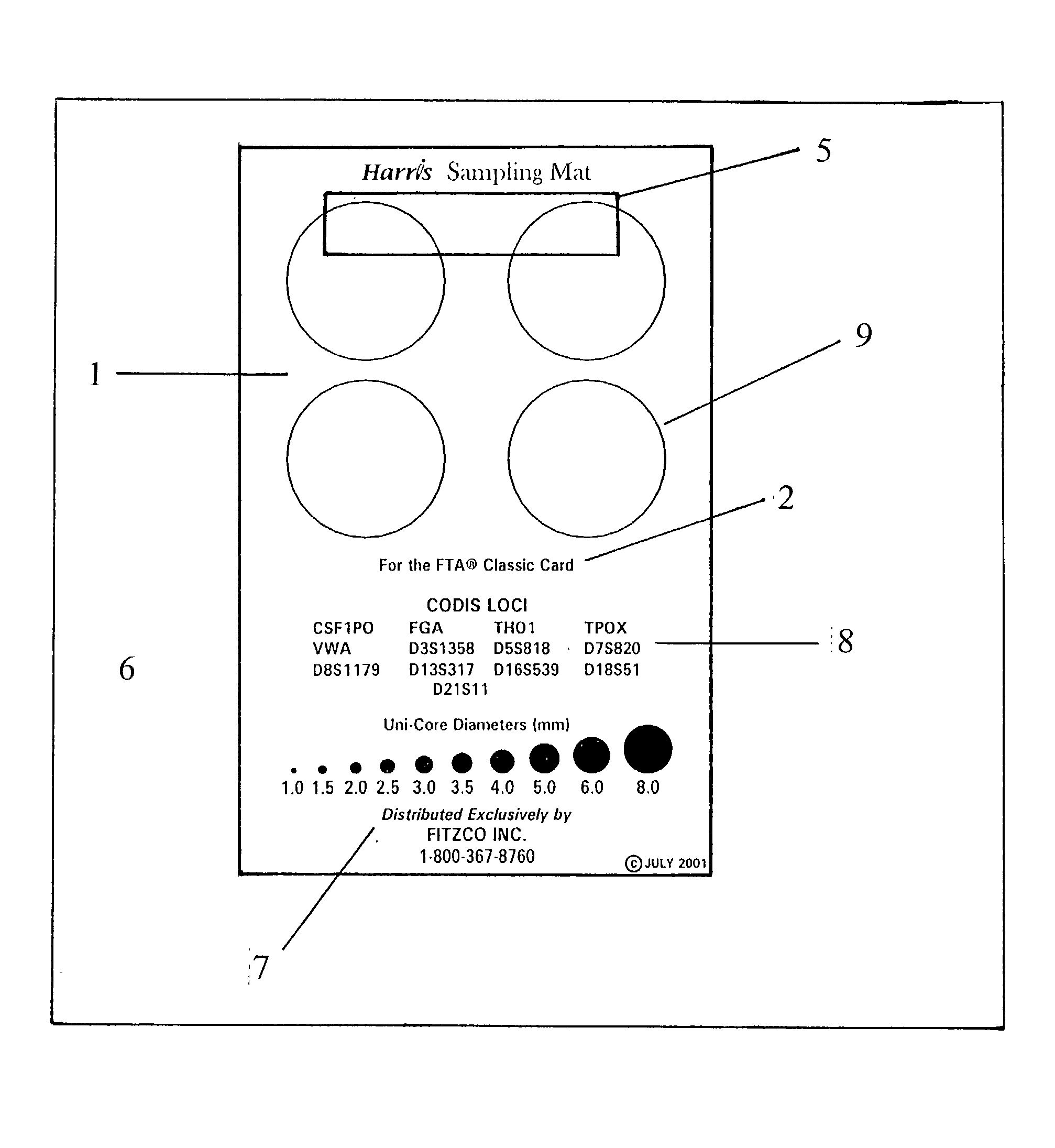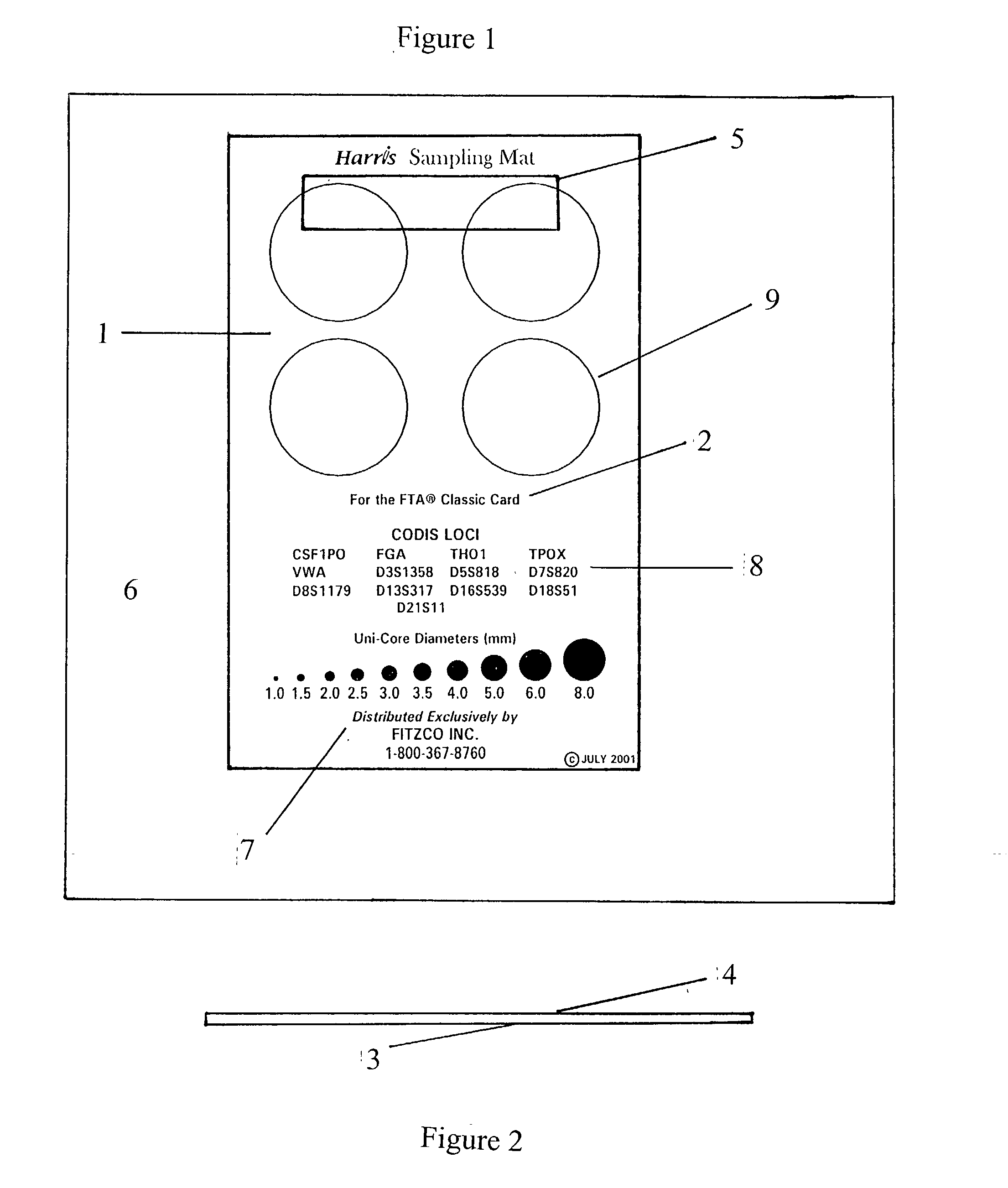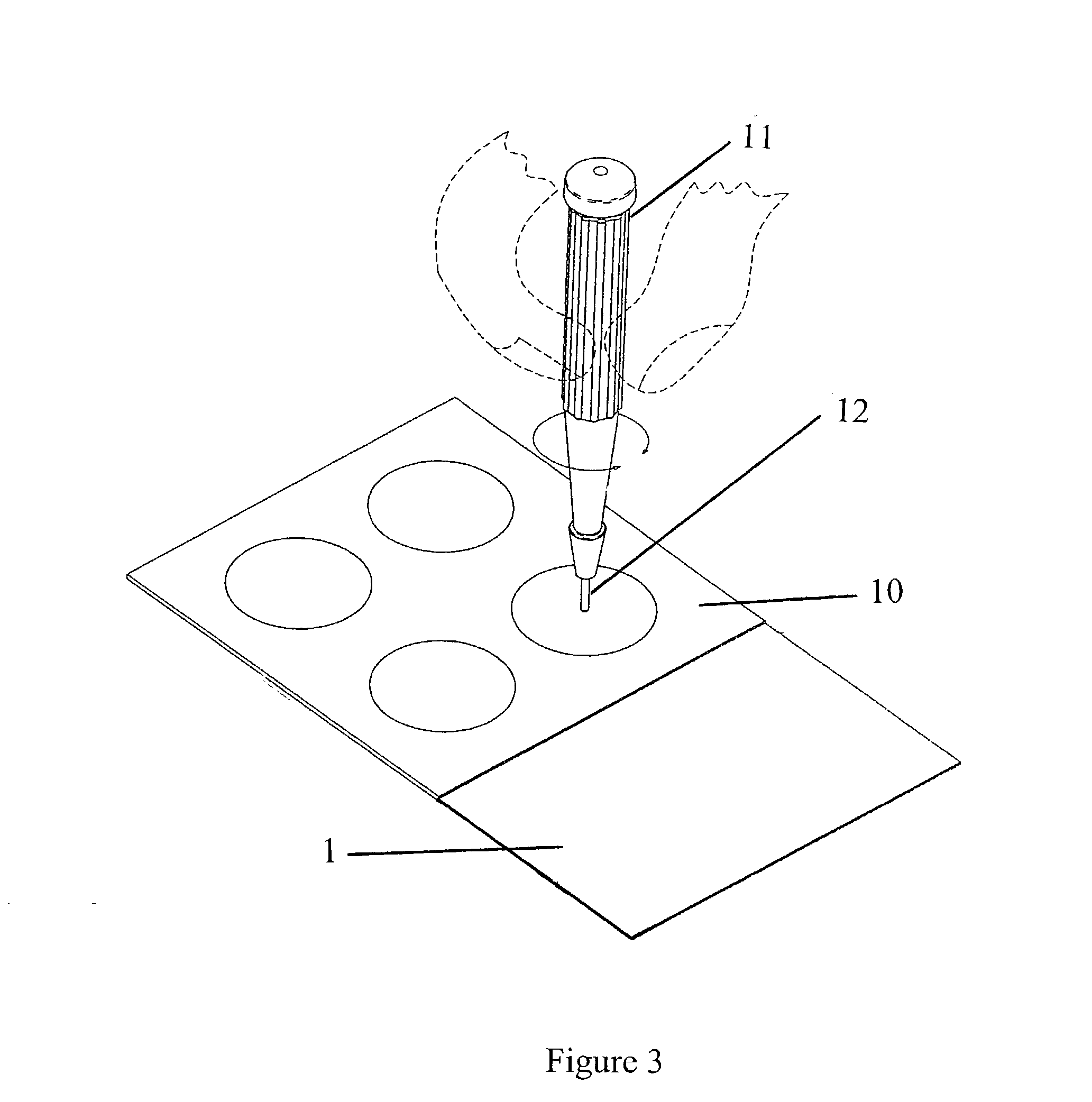Cutting mat for material sampling
a cutting mat and material technology, applied in the field of samples, can solve the problems of minute artefacts that can become lodged or embedded, and the nature of samples, and achieve the effects of easy transportation and use, high rockwell hardness, and strong practicability
- Summary
- Abstract
- Description
- Claims
- Application Information
AI Technical Summary
Benefits of technology
Problems solved by technology
Method used
Image
Examples
Embodiment Construction
[0022] Referring to FIG. 1, a preferred embodiment of a recordable cutting mat for sample collection constructed in accordance with the principles of the invention is shown. A cutting mat 1 of preferred dimension bearing printed detail 2 on the bottom side cutting surface 3 which can be read from the top side cutting surface 4. An adhesive strip 5 positioned on the bottom side 3 of the mat 1 is used to adhere the mat 1 to a surface 6 to prevent slippage, possible injury during sampling and to free both hands to better manipulate the source material to be sampled and cutting device used. The mat 1 is cut from a larger manufactured extruded sheet of plastic. The mat 1 may be cut to any size from a larger source of mat.
[0023] In a preferred embodiment the sheet is fully transparent allowing for printed detail 2 on the bottom side 3 of the mat 1 to be viewed through the top side 4 of the mat 1. This printed detail 2 may comprise any text 7, numerical data 8 or graphic image such as circ...
PUM
 Login to View More
Login to View More Abstract
Description
Claims
Application Information
 Login to View More
Login to View More - R&D
- Intellectual Property
- Life Sciences
- Materials
- Tech Scout
- Unparalleled Data Quality
- Higher Quality Content
- 60% Fewer Hallucinations
Browse by: Latest US Patents, China's latest patents, Technical Efficacy Thesaurus, Application Domain, Technology Topic, Popular Technical Reports.
© 2025 PatSnap. All rights reserved.Legal|Privacy policy|Modern Slavery Act Transparency Statement|Sitemap|About US| Contact US: help@patsnap.com



